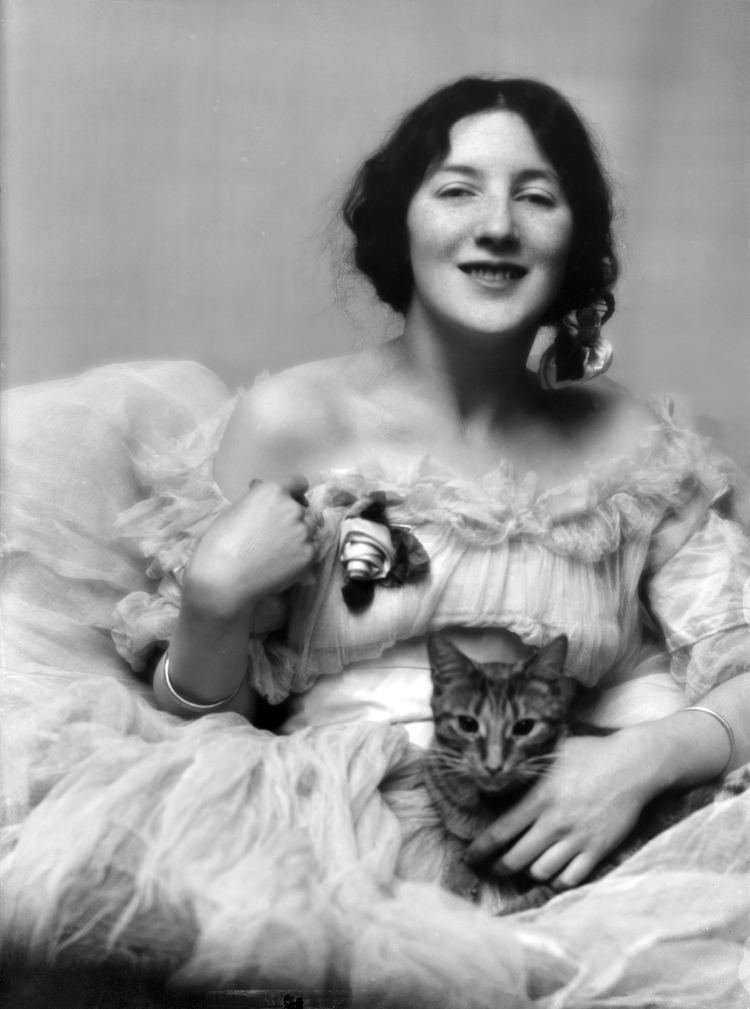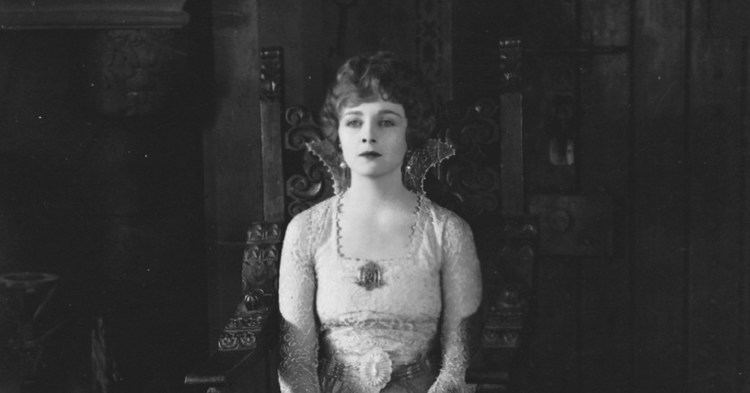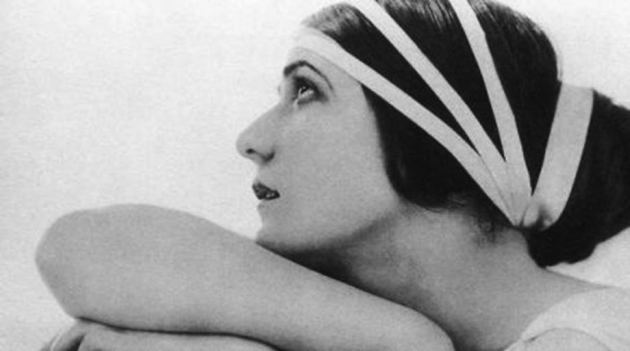Resting place New Haven Cemetery Role Model Name Audrey Munson | Years active 1906–1921 Nationality American | |
 | ||
Full Name Audrey Marie Munson Occupation Artist's model, actress Movies Inspiration, Purity, Heedless Moths Parents Katherine Mahaney, Edgar Munson Similar People Edwin Thanhouser, Robert Z Leonard, Greenbrier Ghost, Joseph W Farnham | ||
America s first supermodel audrey munson
Audrey Marie Munson (June 8, 1891 – February 20, 1996) was an American artist's model and film actress, considered "America's First Supermodel," and variously known as "Miss Manhattan", the "Panama–Pacific Girl", the "Exposition Girl" and "American Venus". She was the model or inspiration for more than 12 statues in New York City and was the first American movie star to appear fully nude in film, in Inspiration (1915), appearing in four silent films.
Contents
- America s first supermodel audrey munson
- The Sad Story Of Americas First Supermodel Who Ended Up Living In Asylum
- Life and career
- Sculpture
- Filmography
- References

The Sad Story Of America’s First Supermodel Who Ended Up Living In Asylum
Life and career

Long after she and everyone else of this generation shall have become dust, Audrey Munson, who posed for three-fifths of all the statuary of the Panama–Pacific exposition, will live in the bronzes and canvasses of the art centers of the world.

Audrey Marie Munson was born in Rochester, New York, on June 8, 1891. Her father was from Mexico, New York, and she later lived there. Her parents, Edgar Munson and Katherine "Kittie" Mahaney, divorced when she was eight, and Audrey and her mother moved to Providence, Rhode Island.

In 1909, when she was 17 years old, Audrey Munson moved to New York with her mother to become an actress and chorus girl. Her first role on Broadway was as a "footman" in The Boy and The Girl at the Aerial Garden, which ran from May 31-June 19, 1909. She also appeared in The Girl and the Wizard, Girlies and La Belle Paree.

While window-shopping on Fifth Avenue with her mother, she was spotted by photographer Felix Benedict Herzog, who asked her to pose for him at his studio in the Lincoln Arcade Building on Broadway and 65th Street. Herzog introduced her to his friends in the art world, and she began to pose for numerous artists. It was the sculptor Isidore Konti who first persuaded her to pose nude, using her as his model for the three figures in his "Three Graces" for the new Grand Ballroom at the Hotel Astor in Times Square. For the next decade, Munson became the model of choice for a host of sculptors and painters in New York. According to The Sun in 1913, "Over a hundred artists agree that if the name of Miss Manhattan belongs to anyone in particular it is to this young woman." By 1915, she was so well established that she became Alexander Stirling Calder's model of choice for the Panama–Pacific International Exposition held that year. She posed for three-fifths of the sculpture created for the event and earned fame as the "Panama–Pacific Girl".
Her newfound celebrity helped launch her career in the nascent film industry and she starred in four silent films. In the first, Inspiration (1915), the story of a sculptor's model, she appeared fully nude, the first woman to do so in an American motion picture. The censors were reluctant to ban the film, fearing they would also have to ban Renaissance art. Munson's films were a box office success, although the critics were divided. The studio hired a lookalike named Jane Thomas to do Munson's acting scenes, while Munson did the scenes where she posed nude. Her second film, Purity (1916), made in Santa Barbara, California, is the only one of her films to survive, being rediscovered in 1993 in a "pornography" collection in France and acquired by the French national cinema archive. Her third film, The Girl o' Dreams, also made in Santa Barbara, was completed by the fall of 1916 and was copyrighted on December 31, 1918, but appears never to have been released.
Munson returned to the East Coast by train via Syracuse in December 1916 and became involved with high society in New York and Newport, Rhode Island. Her mother insisted she marry "Comstock Lode" silver heir Hermann Oelrichs Jr., then the richest bachelor in America, but there is no record of Audrey Munson's making this claim herself. On January 27, 1919, she wrote a rambling letter to the US State Department denouncing Hermann Oelrichs Jr. as part of a pro-German network that had driven her out of the movie business. She said she planned to abandon the United States to restart her movie career in England.
At the time, Audrey Munson was living with her mother in a boarding house at 164 West 65th Street, Manhattan, owned by Dr. Walter Wilkins. Wilkins fell in love with Munson and murdered his wife, Julia, so he could be available for marriage. Munson and her mother left New York, and the police sought them for questioning. After a nationwide hunt, they were located. They refused to return to New York, but were questioned by agents from the Burns Detective Agency in Toronto, Ontario, Canada. The contents of the affidavits they supplied have never been revealed, but Audrey Munson strongly denied she had any romantic relationship with Dr. Wilkins. Wilkins was tried, found guilty, and sentenced to the electric chair. He hanged himself in his prison cell before the sentence could be carried out.
By 1920, Munson, unable to find work anywhere, was living in Syracuse, New York, supported by her mother, who sold kitchen utensils door to door. In February 1921, agent-producer Allan Rock took out advertisements showing a $27,500 check he said he had paid Munson to star in a fourth film titled Heedless Moths. She later said the $27,500 check was just a "publicity stunt," and she filed suit against Allan Rock. The 1921 film was based on her life story, which was then being serialized in dozens of newspapers, and on short stories and other articles she had written for Hearst's Sunday Magazine. In the series of twenty articles that recounted her life story, she asked the reader to imagine her future:
What becomes of the artists' models? I am wondering if many of my readers have not stood before a masterpiece of lovely sculpture or a remarkable painting of a young girl, her very abandonment of draperies accentuating rather than diminishing her modesty and purity, and asked themselves the question, "Where is she now, this model who was so beautiful?"
On May 27, 1922, Munson attempted suicide by swallowing a solution of bichloride of mercury.
On June 8, 1931, her mother petitioned a judge to commit her to a lunatic asylum. The Oswego County judge ordered Munson be admitted into a psychiatric facility for treatment. She remained in the St. Lawrence State Hospital for the Insane in Ogdensburg, where she was treated for depression and schizophrenia, for 65 years, until her death at the age of 104. For decades, she had no visitors at all, but she was rediscovered in the asylum by a half-niece, Darlene Bradley, in 1984, when Munson was 93. Munson died February 20, 1996 at the age of 104. She was buried without a gravestone of her own in the Munson family plot in New Haven Cemetery, New Haven, New York until 2016, 20 years after her death when her family decided to add a simple tombstone for what would have been her 125th birthday.
Decades after her career ended, she was sufficiently famous to serve as the subject of an anecdote in a memoir that P.G. Wodehouse and Guy Bolton wrote of their years on Broadway, Bring on the Girls! (1953), though that memoir is considered more fiction than fact by Wodehouse's biographer.
Sculpture
PPIE = Panama–Pacific International Exposition
Herbert Adams
Robert Ingersoll Aitken
Karl Bitter
Alexander Stirling Calder
Daniel Chester French
Sherry Edmundson Fry
Albert Jaegers
Carl Augustus Heber
Isidore Konti
Evelyn Beatrice Longman
Augustus Lukeman
Frederick MacMonnies
Allen Newman
Attilio Piccirilli
Furio Piccirilli
Frederick Ruckstull
Adolph Alexander Weinman
Albert G. Wenzel
Gertrude Vanderbilt Whitney
Other sculptures at the Panama-Pacific International Exposition
Filmography
The four films in which Munson appeared were thought to have been lost until a copy of Purity (1916) was recovered in France.
